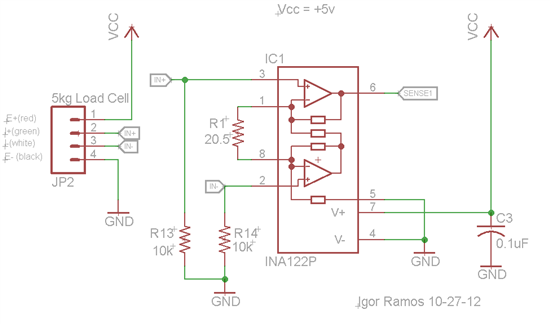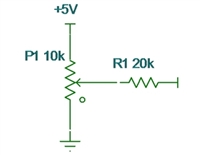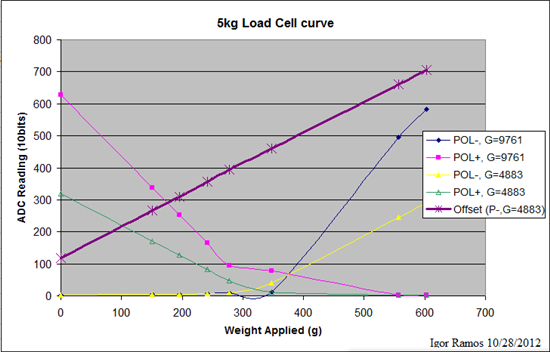Hello friends,
I am new to load cells and instrumentation amps, so I want your opinion if the results below are typical or I'm doing something wrong.
As you can see in the graph below, I could not find gain & polarity combination that would work in the full weight range. It seems like one polarity works best for higher weights (over 400g) and the opposite polarity works best for less weight (under 300g). Is this the nature of the load cell or I should tweak something?
here my circuit
for your reference here's additional project details:
https://sites.google.com/site/isramos/home/load-cell
thank you!






